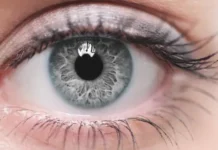In the realm of eye health and wellness, one topic that often remains understated is the correlation between eye conditions and headaches. At our esteemed SEO-optimized website, we understand the importance of delivering comprehensive and relevant information to our readers. In this article, we delve into the intricate relationship between eye health and headaches, shedding light on various aspects that have a profound impact on our vision and overall well-being.

Eye Strain
One of the primary culprits behind the link between eye health and headaches is eye strain. Prolonged periods of screen time, reading in poor lighting conditions, or focusing on objects at close distances can cause undue stress on our eye muscles.
As a result, individuals may experience discomfort, blurred vision, and, yes, headaches. The eye strain can be particularly pronounced among those who spend hours working on computers or using digital devices.
Symptoms of Eye Strain
- Blurred or double vision.
- Dry, irritated eyes.
- Difficulty focusing on nearby objects.
- Increased sensitivity to light.
Role of Refractive Errors
Refractive errors, such as nearsightedness (myopia), farsightedness (hyperopia), and astigmatism, can significantly contribute to both eye discomfort and headaches.
These conditions cause light entering the eye to be improperly focused on the retina, resulting in blurred vision. The brain then exerts extra effort to interpret the visual input, which can lead to headaches.
Addressing Refractive Errors
If you suspect that refractive errors are affecting your eye health and causing headaches, it’s crucial to consult with an optometrist or ophthalmologist. Corrective measures, such as prescription eyeglasses or contact lenses, can effectively alleviate these issues and reduce the associated headaches.
Digital Eye Strain: A Modern Dilemma
In today’s digital age, digital eye strain has become increasingly prevalent. This condition, also known as computer vision syndrome (CVS), arises from the extended use of computers, smartphones, and other digital screens.
The high-energy blue light emitted by these devices can disrupt sleep patterns, cause eye strain, and contribute to headaches.
Preventing Digital Eye Strain
To mitigate digital eye strain and its accompanying headaches, consider the following strategies:
- Use blue light-filtering glasses.
- Follow the 20-20-20 rule: Every 20 minutes, take a 20-second break and focus on something 20 feet away.
- Adjust screen brightness and font size to reduce glare and strain.
Migraines and Their Ocular Connection
Migraine headaches are a distinct type of headache that can have a profound impact on an individual’s life. Interestingly, migraines often come with various visual disturbances, known as “ocular migraines” or “migraines with aura.”
These visual disturbances can include flashing lights, zigzag lines, or blind spots, which can be mistaken for eye problems.
Ocular Migraines from Eye Conditions
It’s crucial to distinguish between ocular migraines and actual eye conditions. Ocular migraines are typically temporary and resolve on their own, while eye conditions may require medical attention. If you experience sudden visual disturbances along with a headache, consult a healthcare professional to rule out any underlying eye issues.
Regular Eye Examinations
In conclusion, the relationship between eye health and headaches is intricate and multifaceted. To ensure optimal eye health and reduce the risk of headaches, it is essential to prioritize regular eye examinations. Qualified eye care professionals can detect and address eye conditions and refractive errors promptly, significantly improving your overall quality of life. Remember, maintaining good eye health goes beyond just preventing headaches. It plays a pivotal role in preserving your vision and well-being for years to come.
Ocular Migraines: Symptoms, Causes, and Treatment Options


